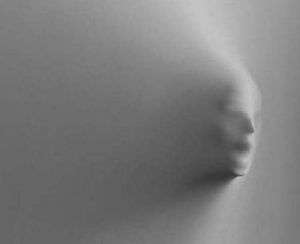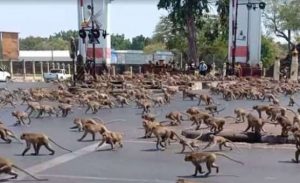The phenomenon of “religion” in Japan oddly enough still confounds scholars, practitioners, and the public—inside and outside of Japan—who continue to embrace the stubborn assumption that Japanese, on the whole, are “areligious.” It is easy to find articles, blogs, and videos in which Japanese people confess that they are “mushūkyō” (“areligious”).* This statement is often followed with the comment that the people who just confessed to be “areligious” have a “Buddha altar” (butsudan) at home, observe “religious” holidays such as “New Year” (oshōgatsu) and “Obon,” the mid-Summer holiday in which the return of the dead to their hometowns for a few days is celebrated, and chant “religious” texts such as the Heart Sūtra (Hannya shingyō) or recite “religious” evocations, such as the nembutsu, “Namu amida butsu.”
This seeming paradox is nicely summarized by a survey conducted by the Pew Foundation which states: that 72 per cent [of the Japanese] do not have any religious faith, 68.8 per cent do not follow any religion, 70.4 per cent of the total population identify as Shintō and 60.8 per cent as Buddhists.** Scholars of religion as well as a anyone familiar with this topic know that the problem lies in the definition of “religion,” and especially the usage of the Japanese translation of “religion,” “shūkyō.”*** “Shūkyō” literally means “teaching of the school/sect” and points toward an orthodoxy with emphasis on “correct faith,” whereas a visit to a Buddhist temples or a Shintō shrine seems to reveal a focus on “correct practice” (orthopraxy). Most importantly, to many Japanese, the term “shūkyō” seems to imply “religion as presumably lived in the United States.”
I am currently in Japan, having made it into the country after a two-year long hiatus due to COVID-19. On 18–19 June, I participated at a conference in Matsumoto City in Nagano Prefecture. On the way back to my university in Sendai, I stopped for one night in Nagano City to visit the famous Zenkō-ji. What I saw at Zenkō-ji would have made any person who seriously believes that “the Japanese are areligious” stop in their tracks and rethink their premise. The temple was crowded with people who waited for up to two hours in line simply to touch a wooden pillar called “ekōbashira.” The people at the event were engaging in multiple devotional practices and participating in, dare I say it, “religious” rituals. I have included a few links in the bibliography that printed pictures of the event.**** I have to say that it was quite an experience.
Like most Buddhist temples in Japan, Zenkō-ji has a main image (honzon). Zenk-ōji enshrines the secret Amida Buddha triad consisting of Amida Buddha in the center, Kannon (Ch: Guanyin) Bodhisattva to the left of Amida, and Seishi (Set: Mahāsthāmaprāpta) Bodhisattva to his right. The triad expresses that liberation symbolized by Amida synthesizes wisdom indicated by Seishi and compassion embodied by Kannon. Although this image is not accessible to the public, it is immensely famous. Once every six years—according to the Japanese way of counting and due to COVID-19, it was seven years this time) the image is revealed in a celebration called gokaichō. Every six or seven years, a pillar is erected for two months to present the secret Amida to the public and to display the innermost core of the temple, and, in some sense, Nagano City, in symbolic form.

This tension between disclosure and concealment, the two mutual aspects of the Truth according to Martin Heidegger (1889–1976), constitutes a central feature in religious practice in Japan. Shintō shrines are notorious for not displaying images of the divine (kami). The foxes at the so-called “fox shrines” are merely protector deities, the enshrined kami is mostly Inari, which is why the Japanese name for them is “Inari Jinja.” The enshrined kami is symbolized by a “divine body” (shintai), usually a mirror, or simply by the closed doors of the “main hall” (honden). The use of a mirror to symbolize the divine begs, of course, for interesting discussions. But today, I want to simply point out that the practice of hiding and concealing the main deity is common in the case of Shintō shrines as well. The divine core is hidden and only revealed symbolically.

The motif of concealment and disclosure can be found elsewhere in Buddhism in Japan. For example, one of the rituals conducted at Zenkō-ji is to walk underneath the secret golden triad of Amida through a pitch-dark tunnel entering the “inner sanctuary” (naijin). Instead of bringing the “main image” to light, even if it is in symbolic form, this practice involves the immersion of the practitioner into the darkness of the inner sanctuary. A last example of this trope of concealment-and-disclosure is the mid-summer festival (obon), when people in Japan celebrate the temporary return of the deceased to their hometowns. Although many Japanese probably do not believe in the real return of spirits from the underworld (yomi), the presence of those who went before us is experienced symbolically in a festival (matsuri) that combines Shintō and Buddhist aspects.
And this is why I think those kinds of practices are inherently religious. Besides the fact that the Shintō and Buddhism in Japan fulfil most if not all criteria for “religion,” be they sociological anthropological, psychological, and philosophical regardless of whether the practitioners identify as “religious” or “areligious,” this tension between that-which-is-concealed and that-which-is-revealed constitutes the core of the religious project. Medieval Christian theologians, most notably Thomas Aquinas (1225–1274), clearly stated that divine nature can be articulated only symbolically or through silence, the so-called “negative theology” (via negativa). The Dao de jing famously opens with the line “The Dao that can be told is not the eternal Dao – the name that can be named is not the eternal Name.” Dōgen, to return to Japan, famously said that our embodiment of the “buddhas and the ancestors” (shobutsu shoso) constitutes “expression-and-not-expression” (dōtoku-fudōtoku). In some sense, religion is the attempt to embody ritually, symbolically, and communally that which is concealed and beyond our understanding. The practices described above illustrate this project of disclosing-what-is-concealed as well as any other tradition.
* That Japanese Man Yuta. 3 January 2018. “What Japanese think of Religion.” (YouTube)
** Noriko Iwai. 11 October 2017. “Measuring Religion in Japan: ISM, NHK, and JGS.” Pew Research Center: https://www.pewresearch.org/wp-content/uploads/sites/7/2017/11/Religion20171117.pdf
*** Jason Ananda Josephson Storm. 2012. The Invention of Religion in Japan. Chicago: University of Chicago Press.
**** “Matsushirochō ekōbashira.” Matsushiro. Shinshū Matsushiro Kankōkyōkai: https://www.matsushiro-kankou.com/special/gokaicho/














